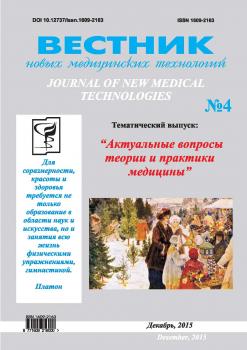The article is devoted to the study of the problem of myometrium reaction on implantation of polypropylene mesh prostheses in uterine suture strengthening. Experimental studies have found in animals after strengthening the seam on the uterus polypropylene mesh implant following complications in the postoperative period, such as: bruises, seroma seam and deformation of the uterus. These complications occurred significantly more often than when suturing the incision of the uterus row of blanket stitch. In the evaluation of adhesions, the statistically significant differences in the studied groups weren´t found. According to morphological studies, it was revealed in the early days a tissue edema and infiltration by plasma cells and macrophages, which remained at a later time, a capsule isn´t fully formed, cellular component prevailed over fiber. In later terms a mature fibrous capsule is formed, necrosis areas are detected on the inner side of prosthesis filaments, giant cells of foreign bodies, neutrophils, eosinophils were found around filaments. To objective evaluation of the state of inflammatory process around prosthesis filaments the authors used a cellular index method. It was determined that the degree of spatial organization of the capsule and the degree of maturity of the connective tissue is in direct proportion to the duration of the experiment.
myometrium, implantation, polypropylene mesh prostheses.
Введение. Проблемы, обусловленные наличием рубца на матке после абдоминального родоразреше-ния всегда являлись одними из самых актуальных в акушерстве. На протяжении 15-20 лет, как в зарубежных странах, так и в России отмечается рост частоты кесарева сечения в 3-4 раза. Согласно данным литературы частота абдоминального родоразрешения составляет от 13 до 45% [10].
Успех самопроизвольных родов после кесарева сечения определяется прежде всего, состоянием рубца на матке. В связи с этим, всё большую акутальность приобретают фундаментальные вопросы репарации шва на матке, которые во многом определяют течение раннего послеоперационного периода, а в дальнейшем и состояние репродуктивной функции женщины, исход ее последующей беременности и родов [1,4,6,8]. Полноценное заживление рассеченной стенки матки является ключевым вопросом повторной операции.
Основными предпосылками для хорошей регенерации тканей и формирования полноценного рубца служат оптимальные условия кровоснабжения, исключающие развитие ишемии и гипоксии тканей в области шва и минимальная воспалительная реакция, что определяется способом востановления рассечения стенки матки и видом шовного материала [3].
В ряде случаев акушеры‐гинекологи сталкиваются





